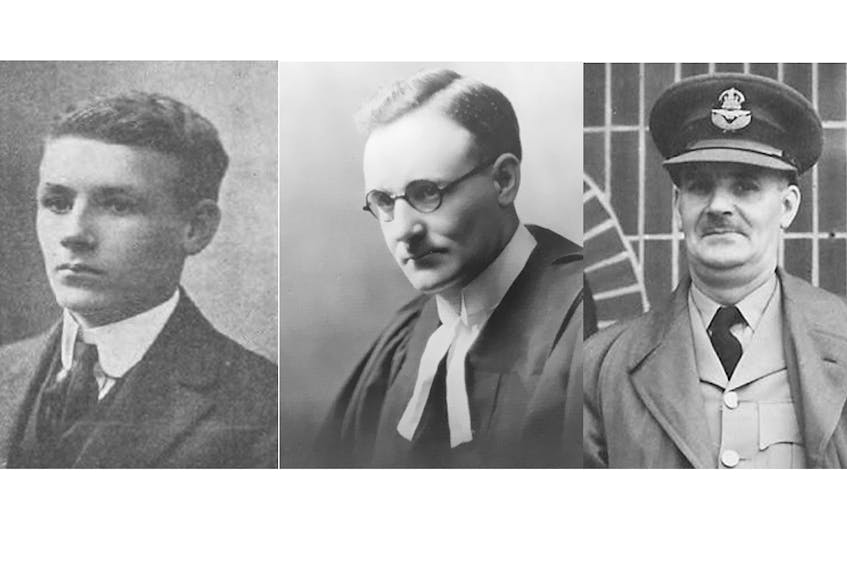The building of a railway across an island of windswept barrens, innumerable brooks, ponds and dense forests is not merely a story of carving out a rail-bed and setting lengths of iron. It is also a story of skilled and determined people. Here in Newfoundland in the late 19th century, such people slowly traversed the island to build a railway that would put behind us a large measure of our isolation.
The name most synonymous with the Newfoundland railway is Robert G. Reid, a Scotsman who, with the Newfoundland government, wrung from a failed railway project a new start and ultimately the completion of the rails from the most easterly point, St John’s, to a western embarkation point opposite Cape Breton.
Among those advancing with Reid into this landscape was another Scots family, that of Henry and Amelia (Reid) Crawford. Henry had emigrated from Scotland to Montreal and from there, as work beckoned, to Nova Scotia, Cape Breton and ultimately, to Newfoundland. Like Reid himself, Henry knew stone and stone masonry; his family were expert bridge and trestle builders and they knew how to manage construction.
But it wasn’t only the men who faced some 600 miles of wilderness. Whole families were there. It was a small mobile society with a single focus.
A boy was born to Henry and Amelia at Whitbourne; another boy was born in the interior near where Gander would one day be built. Others of the family would call St. John’s their home. It is the boy born in central Newfoundland who takes our attention in today’s column. He was Edward. H.M. Crawford or “Ned”. He was born in Benton in 1894.
A brilliant student
Early in life, Ned Crawford showed exceptional scholastic aptitude. He was not simply a good student, he was an academic overachiever. In St. John’s he attended the Roman Catholic St. Bonaventure’s College, an unusual placement in those strongly denominational days for the Crawfords were strict Presbyterians. Ned became Newfoundland’s Rhodes Scholar for 1914. Additional achievements included a Bachelor of Jurisprudence (Oxford), a Bachelor’s in Civil Law and a Master of Arts degree.
In the days of the Great War Ned, in addition to studying, worked in British munitions factories. This brought the young Newfoundlander into contact with the community at large, and new friends, including, Gladys Fouracres.
When Gladys became pregnant it meant a family catastrophe for those times were vastly different from today.
A family predicament
In St. John’s today, Jim Crawford, great-nephew of Ned, reflects on the quandary this must have placed on Ned’s family.
Ned’s younger brother, Robert, was in London during the war serving with the Newfoundland Regiment. Jim suggests that Robert was either coerced or rewarded financially, for he married Gladys to legitimize her baby. Otherwise, it was quite likely that, if this perceived scandal surfaced, Ned would lose his Rhodes scholarship and his position at Oxford. At three hundred pounds a year for three years, the Rhodes Scholarship was a prestigious scholarship, as it is even today.
Robert and Gladys married and Ned’s son “Teddy” was born. Not long afterwards, Teddy was joined by a brother (in fact, a half-brother), “Jimmy.” Close in age, the boys grew up together.
Teddy and Jimmy
Robert and Gladys eventually separated which, Jim says was inevitable given the circumstances. Divorced, Robert moved to Australia where he spent the rest of his life. The boys attended public schools and when their mother remarried and moved to Egypt, they spent their holidays with their grandmother, Gladys’s mother. Ned’s parents in St John’s and their eldest son, James G. Crawford provided financial assistance for the boys. Both Teddy and Jimmy went on to attend Sandhurst Military College where they excelled. When the storm clouds of World War II formed-up, both young men joined the British army as officers.
Teddy fought in the ill-fated Norway campaign in 1940. Captured by the Germans, he spent the rest of the war as a POW inside the Third Reich. Jimmy was assigned to, and fought in the infamous and bloody Burma Road conflict - (see Wikipedia, Burma Road).
At the war’s end both Jimmy and Teddy accepted administrative jobs with the British Government in the African colonies. Subsequently, Teddy stayed in Africa and Jimmy eventually moved to Australia. Both married; Teddy had one daughter and Jimmy, a son and a daughter. Both died in England, Jimmy in 1978 and Teddy in 1984.
Ned Crawford returned to Canada and settled in Winnipeg where he practised law and was awarded the King’s Counsel (KC). He married Elizabeth Mackenzie and had three children. Some Crawford family members still live in Winnipeg.
Ned’s war service
Like his son and nephew, Teddy and Jimmy, Ned served in World War II but with The Royal Canadian Air Force as a Flight Commander. Jim Crawford says the family is fairly certain Ned’s war work involved intelligence operations and Ned was thought to have been a friend of spymaster, William Stephenson, also from Winnipeg, “A Man Called Intrepid” — (see Wikipedia). Whatever the details of Ned’s role in the war, he retired with an MBE (military) honours, signifying exceptional service.
A granddaughter, Jodi Carmichael, has written a novel, “Family of Spies” (Great Plains Publications, 2018) inspired by her grandfather’s service during the Second World War.
Ned’s wife, Elizabeth, died in 1951. Seventeen years later, in 1968, Ned returned to the United Kingdom and reunited with Gladys who, now widowed, was residing once again in her native country. They married the same year and both returned to Winnipeg and settled there until his death four years later. Gladys died in Winnipeg in 1983.
The story of Benton-born Ned Crawford and the people and events that filled his life is one for which that seasoned cliché is so appropriate, “with facts like this, who needs fiction?”
Paul Sparkes is a long-time journalist intrigued by the history of Newfoundland and Labrador. E-mail: [email protected].









